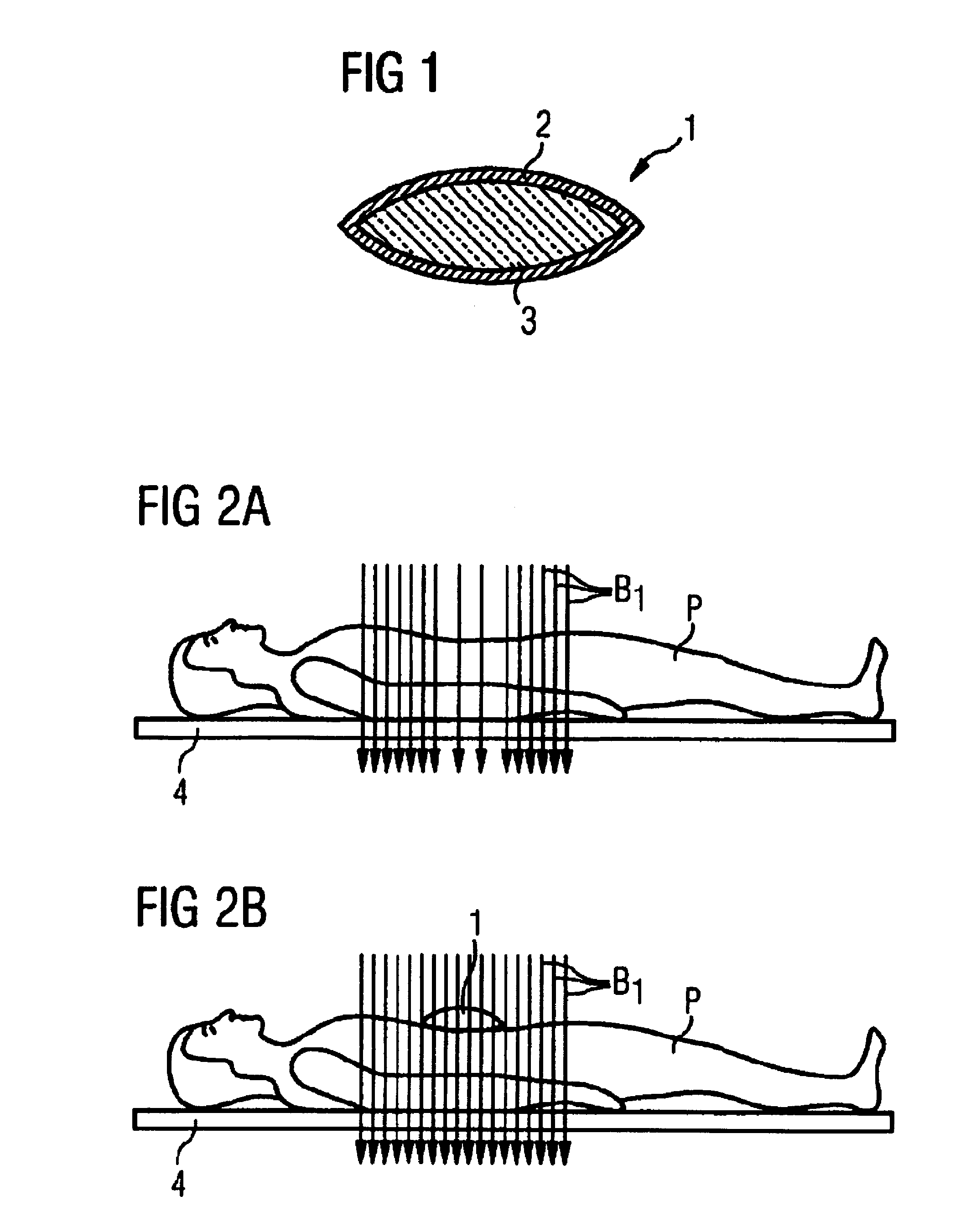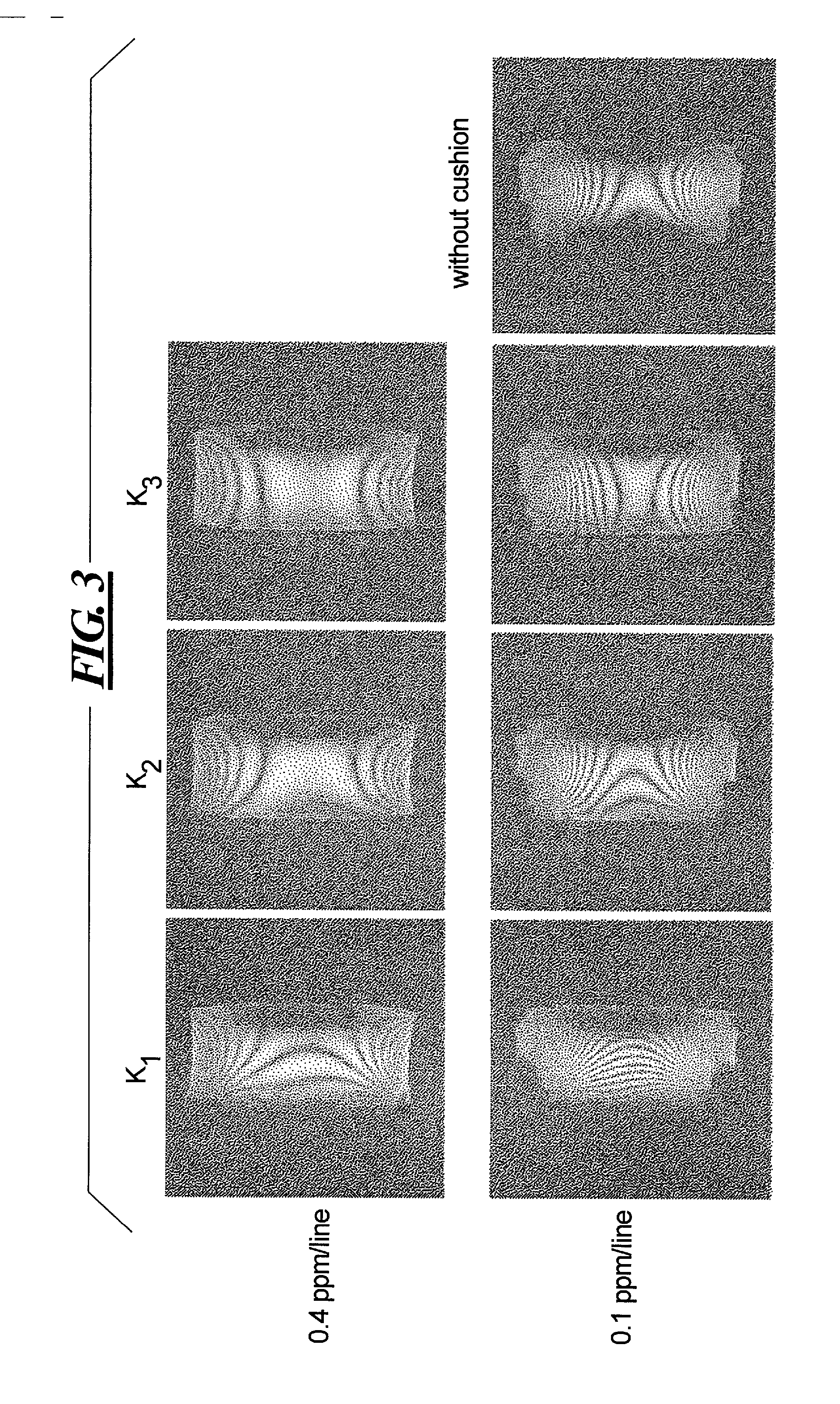Dielectric element, and magnetic resonance imaging method using same
a technology applied in the field of dielectric elements and magnetic resonance imaging methods using same, can solve the problems of reducing the conductivity of dielectric element materials, and achieve the effect of reducing or even completely preventing interference in magnetic resonance recordings
- Summary
- Abstract
- Description
- Claims
- Application Information
AI Technical Summary
Benefits of technology
Problems solved by technology
Method used
Image
Examples
Embodiment Construction
[0034] The dielectric element shown in FIG. 1 is a dielectric cushion 1 having an outer plastic film casing 2 and a filling 3 that contains a paramagnetic substance bound to particles of a cation exchanger. The plastic film 2 is a bio-friendly material which is relatively thin, but nevertheless sufficiently stable to prevent egress of the filling 3 contained therein. The plastic film 2 is preferably welded all round.
[0035] When in use, the dielectric cushion 1 can additionally be covered with a washable cushion cover which can be changed before using the dielectric cushion 1 on another patient. Advantageously the plastic film casing 2 can be disinfected using normal means.
[0036] In the specific example, the filling 3 is an aqueous sodium polyacrylate gel containing particles of the strongly acidic cation exchanger Dowex® 50 WX8 which is charged with Mn2+ ions. The cation exchanger used had the following characteristics: moisture content approx. 50 wt. %, ion exchange capacity: 4.8...
PUM
 Login to View More
Login to View More Abstract
Description
Claims
Application Information
 Login to View More
Login to View More - R&D
- Intellectual Property
- Life Sciences
- Materials
- Tech Scout
- Unparalleled Data Quality
- Higher Quality Content
- 60% Fewer Hallucinations
Browse by: Latest US Patents, China's latest patents, Technical Efficacy Thesaurus, Application Domain, Technology Topic, Popular Technical Reports.
© 2025 PatSnap. All rights reserved.Legal|Privacy policy|Modern Slavery Act Transparency Statement|Sitemap|About US| Contact US: help@patsnap.com



